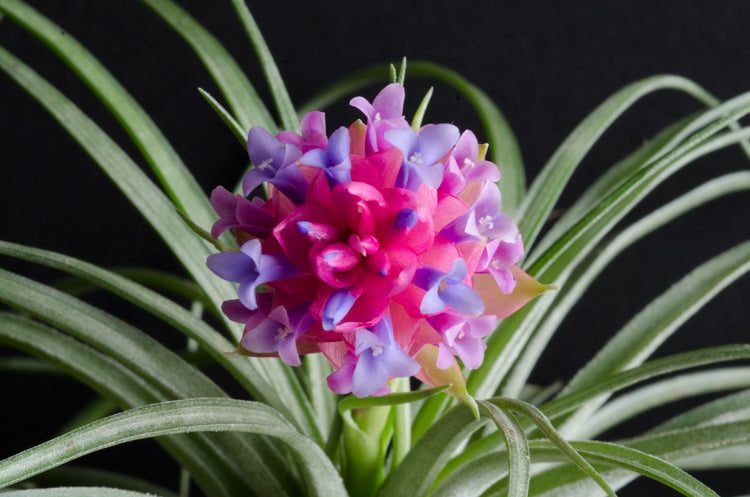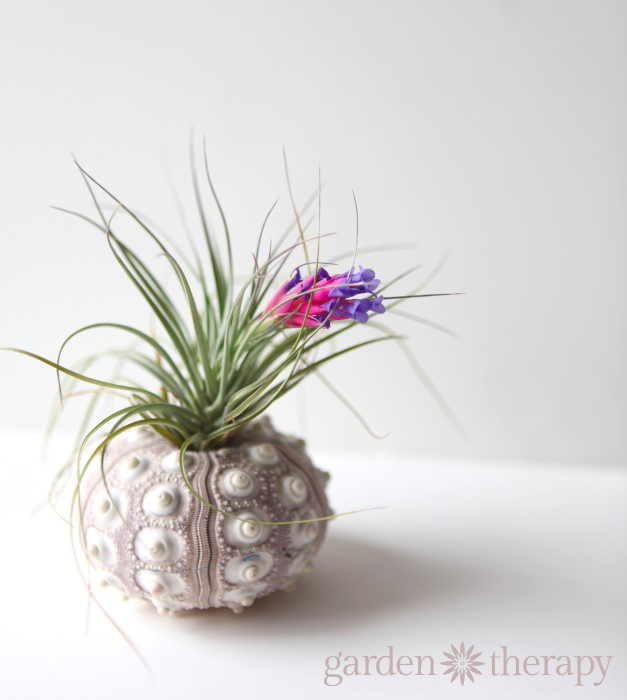To get air plants to bloom, provide them with bright, indirect light and soak them in water once a week for 20 minutes. Air plants need light, water, and nutrients to bloom successfully.

Credit: theartizanway.com
How to Get Air Plants to Bloom : Step by Step Guide
Understanding The Factors That Affect Air Plant Blooming
Understanding the Factors That Affect Air Plant Blooming
Air plants, also known as Tillandsia, are unique plants that don’t require soil to grow. To encourage these plants to bloom, it’s essential to provide them with the right conditions. Here are some factors that affect air plant blooming:
| Light requirements for air plants | Temperature considerations for air plants | Humidity levels for optimal air plant bloom | Proper air circulation for air plant blooming |
|---|---|---|---|
| Air plants thrive in bright, indirect light. Place them near a window or provide them with artificial lighting. | Air plants prefer temperatures between 50-90°F. Avoid extreme temperature fluctuations and protect them from frost. | These plants need humidity levels between 50-70%. Mist them regularly or use a humidifier to maintain the required humidity. | Air circulation is vital for air plants. Place them where there is good airflow, but avoid placing them directly in front of fans or vents. |
By providing air plants with the right lighting, temperature, humidity, and air circulation, you can create the ideal environment for them to bloom. With proper care and attention, you’ll soon enjoy the beautiful flowers and vibrant colors of these fascinating plants.
Nurturing Your Air Plants For Blooming
Choosing the right type of air plant for your environment:
Air plants, also known as Tillandsia, are an excellent choice for indoor and outdoor gardening. However, it is important to choose the right type of air plant for your specific environment. Take into consideration factors such as lighting, temperature, and humidity levels. Some air plants thrive in bright, indirect light, while others prefer lower light conditions. Similarly, certain air plants prefer warmer temperatures, while others can tolerate cooler climates.
Watering air plants requires a delicate balance. Overwatering can lead to rot, while underwatering can cause them to dry out. It is recommended to mist your air plants with water about once or twice a week. Alternatively, you can soak them in water for 20-30 minutes every one to two weeks, allowing them to fully dry before returning them to their display. It is important to avoid using tap water, as the mineral content can harm the plants. Instead, use filtered or rainwater.
While air plants can survive on air, water, and sunlight alone, fertilizing them can help enhance their blooming potential. Use a balanced air plant fertilizer, diluted to half the recommended strength. Apply the fertilizer to the leaves and base of the plant, avoiding the center rosette. Fertilizing once a month during the growing season should be sufficient to promote healthy growth and blooming.
Air plants thrive in a well-ventilated environment with good air circulation. To create a suitable habitat for your air plants, consider using an open terrarium or mounting them on driftwood or other decorative objects. Ensure that the air plants have access to proper light levels and airflow. Avoid placing them in enclosed containers or areas with excessive humidity, as this can lead to rot or fungal diseases.
Supplementing Care For Air Plant Blooming
Supplementing care for air plant blooming involves various techniques to encourage blooming in these unique plants. Using a growth hormone like gibberellic acid can help promote blooming by stimulating growth and flowering. Regular misting is another effective method to enhance air plant health. Misting twice a week helps create the ideal humidity levels that air plants need to thrive and bloom.
Additionally, introducing natural companions can have a positive impact on air plant blooming. Companion plants like bromeliads and orchids provide shade and moisture for air plants, creating optimal growing conditions. Identifying signs of blooming readiness in air plants is crucial to ensure they receive proper care. Signs such as new growth, changes in leaf color, and the emergence of flower buds indicate that the plant is ready to bloom.
Frequently Asked Questions For How To Get Air Plants To Bloom
How Do You Force An Air Plant To Bloom?
To force an air plant to bloom, provide adequate light, water, and temperature conditions. Place the plant in a bright location with indirect sunlight. Mist the plant or soak it in water for 20-30 minutes every week. Maintain a temperature between 50-90°F.
With proper care, the plant will bloom naturally.
What Time Of Year Do Air Plants Bloom?
Air plants typically bloom once a year, usually during the springtime.
How Do I Know If My Air Plant Is Happy?
To determine if your air plant is happy, check for vibrant green leaves, firm and healthy-looking leaves, and a well-established root system. Additionally, look for new growth or offsets, which indicate a healthy plant. Ensure your plant gets adequate light, water, and proper air circulation for its overall well-being.
What Is The Lifespan Of An Air Plant?
The lifespan of an air plant varies depending on the species, but on average, they can live for several years with proper care. They thrive in bright indirect light, regular misting or soaking, and adequate air circulation. Regular care can help them live longer.
Conclusion
Getting air plants to bloom requires proper care and attention. By providing the right amount of light, water, and nutrients, as well as ensuring proper air circulation and temperature, you can encourage your air plants to thrive and produce beautiful blooms.
Remember to avoid overwatering and provide occasional fertilization to keep your air plants healthy and happy. With patience and knowledge, you will soon enjoy the stunning blossoms of your air plants. Happy gardening!

